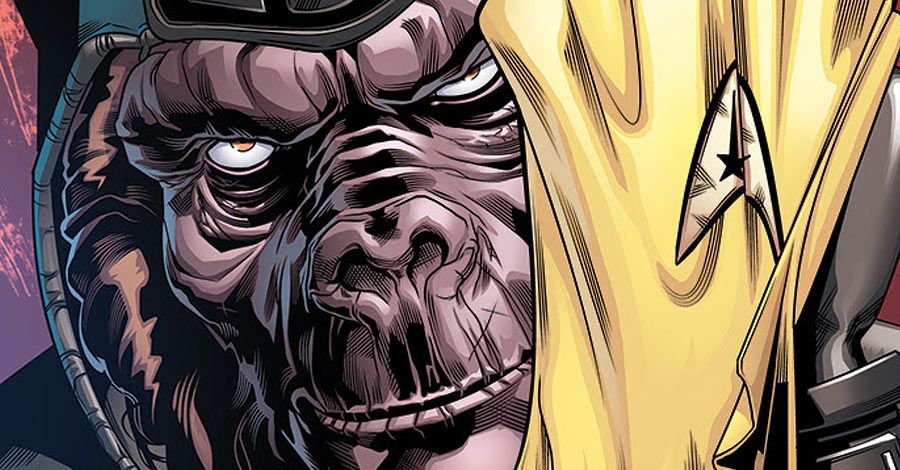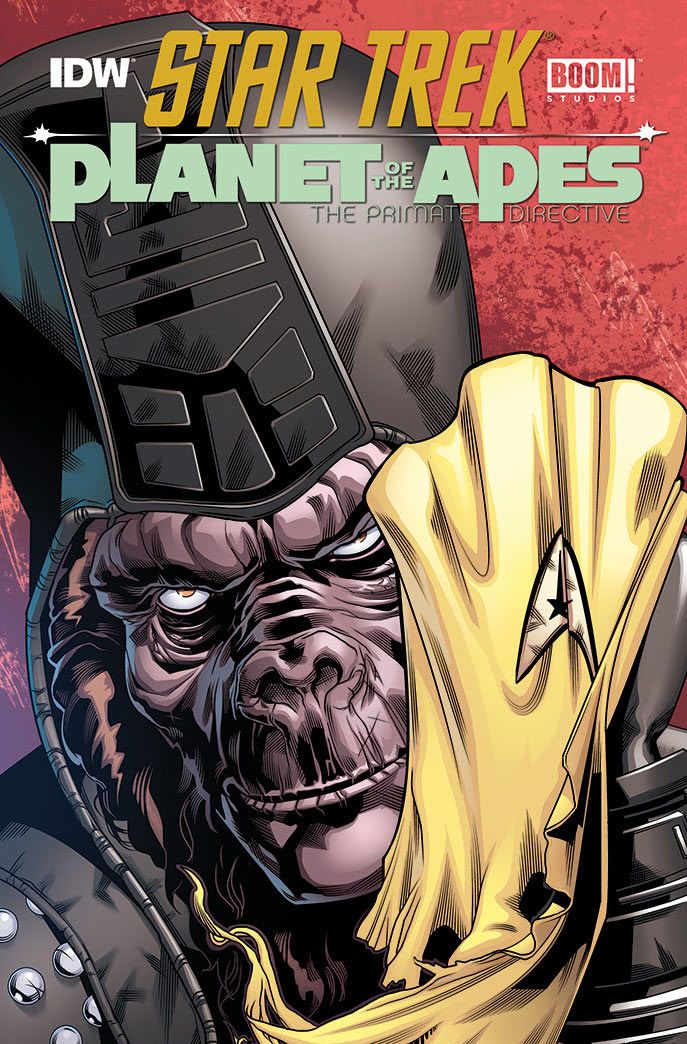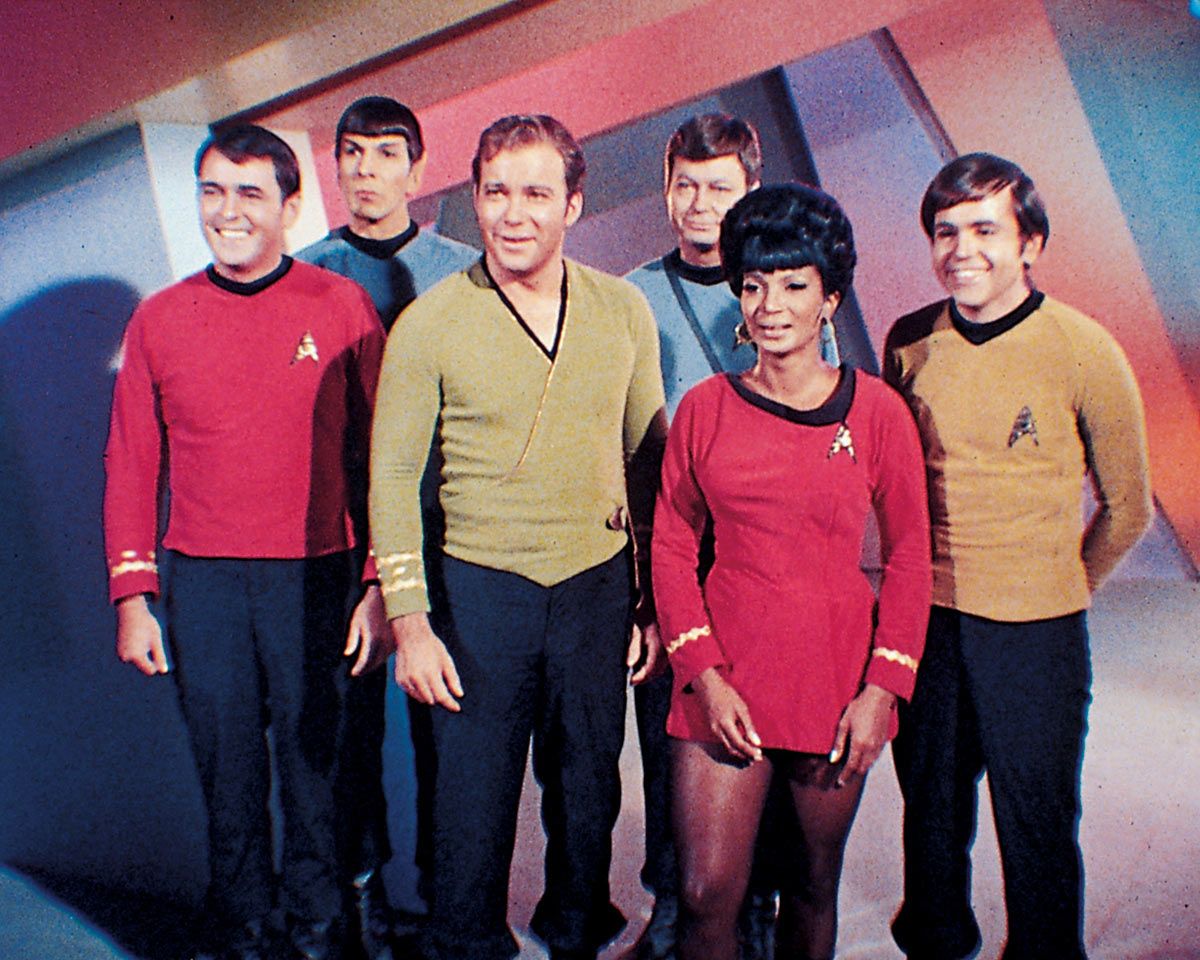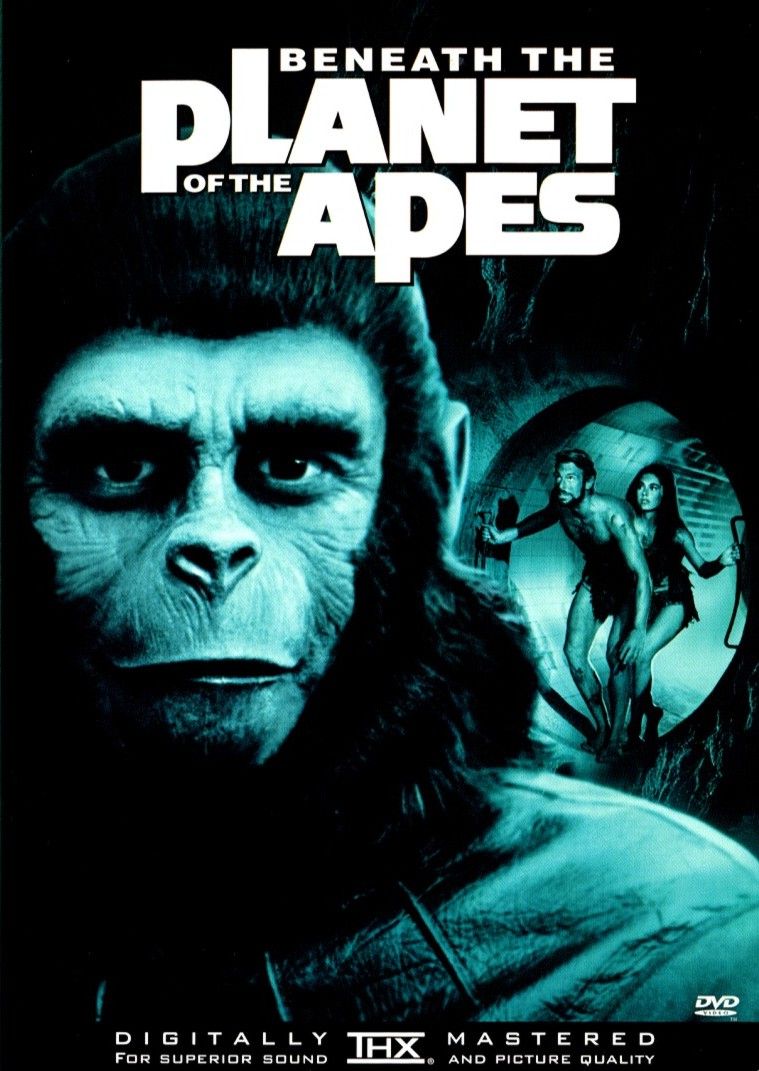IDW Publishing and BOOM! Studios surprised sci-fi and comic fans alike when the two companies announced plans for a "Star Trek/Planet of the Apes" crossover series, written by Scott and David Tipton with art by Rachael Stott.
Kicking off in December, the five-issue "Star Trek/Planet of the Apes: The Primate Directive" finds the U.S.S. Enterprise crew coming across the simian world when they discover a group of Klingons are supporting a renegade group of gorillas trying to overtake Ape City.
The first Star Trek show, now dubbed "The Original Series," debuted in 1966 and followed the exploits of the space-faring crew of Captain Kirk, Mr. Spock, Lt. Uhuru and the rest. The series only lasted three seasons, but lead to a number of films, prequels, follow-ups, comics, books and just about everything else including two films directed by J.J. Abrams.
"Planet of the Apes" debuted a few years later, in 1968, with Charlton Heston's Colonel Taylor accidentally traveling to a future where Earth is overrun by talking simians. Four direct sequels followed, a 2001 remake, a live action TV series, a cartoon and a new rebooted universe most recently visited in "Dawn of the Planet of the Apes."
How Captain Kirk, Dr. Zaius and Colonel Taylor will or won't get along remains to be seen, but the Tiptons and Stott were happy to discuss as much as they're currently allowed about the crossover, bringing the franchises together and how they found out about it in the first place.
CBR News: How did each of you get involved with "Star Trek/Planet of the Apes" and what was your first reaction to hearing about it?
Scott Tipton: These sort of big, inter-company, cross-license projects are always a long time in the making, just because of all the various levels of approval required. David and I were first asked if we had a take on it last year. We jumped at the prospect of being involved and put together a proposal, and then promptly forgot about it until earlier this year, when we heard from our Trek editor Sarah Gaydos following our finishing up work on "Flesh and Stone," asking us if we wanted to come back to work on making this Trek/Apes thing happen. Oh yeah.
When we first heard the idea, it seemed crazier than most crossovers we get pitched to do, just because both "Trek" and PotA have such established continuities. But the more we thought about the more we saw that the similarities and commonalities greatly outweighed the trouble spots, and the prospect of bringing these characters together was too much fun to pass up.
David Tipton: We knew the idea of such a crossover would be of great interest, but we were also committed to coming up with a story that respected the backstory and characters of both universes. We were very happy with the editorial support we received from IDW and BOOM! as well as from CBS and Fox to come up with a way to make this project work.
Rachael Stott: I'd been put into contact with the editor of the book, Sarah Gaydos, through [IDW editor-in-chief] Chris Ryall, who'd seen some of my work at a comics convention in London. After that, I sent her examples of some of my pages, then we chatted back and forth about "Star Trek" with the hope that we'd get to collaborate on something together in the future. I was really excited at the prospect of working with her, and especially on "Star Trek." I'd already done some "Trek" pages in the past for fun, so the possibility of being actually doing it as a job was a little bit mind blowing. And then of course the "Apes" films started to trickle into our email exchanges and then it really did start to seem too good to be true! The concept of joining the two franchises in a crossover is so irresistible, but to be given it as an artist is just face-meltingly cool.
Scott and David, you two are obviously very familiar with "Star Trek." Were you also big fans of the "Planet of the Apes" films?
Scott Tipton: It's no exaggeration to say that the original 1968 "Planet of the Apes" is one of my favorite films of all time, maybe top of the list. I really do think it's kind of a perfect film. No plot holes, the performances are great, the makeups still hold up really well and it doesn't feel dated at all. When I was a kid, the two things had the greatest visual impact on my imagination were "Star Trek" and "Planet of the Apes." Every day I'd watch "Trek" in the evenings, and every summer one of the local TV stations would show all five "Apes" movies in a marathon, and I'd dive in the world of Taylor, Cornelius and Dr. Zaius all over again. In college, when I worked summers at the local video store -- yes, kids, back in the day, there were stores where one would go to rent videos, on tape -- I would repeatedly get lectured by my store's manager for declaring it "Ape Day" and running all five movies on the overhead TV screens. So yeah, "Apes" has always been a big part of my life.
How about you Rachael? You mentioned doing "Trek" pages for fun, but were you a big "Star Trek" or "Apes" fan heading into this book?
Rachael Stott: Growing up I didn't know a single person who watched "Star Trek," and repeats of "TOS" weren't shown on television, so I wasn't really ever exposed to it. All I was familiar with were the bits that have cemented themselves in pop culture, like the character of Mr. Spock, dodgy effects and hammy acting. It was only about three years ago that I caught an episode late at night on a digital TV channel. I think the episode was "All Our Yesterdays," and I remember being really pleasantly surprised at how brilliant it was. Contrary to what I'd been led to believe, the acting was first-rate, the plots were imaginative, the scripts intelligent, and I could really understand why the show has such a dedicated following even after almost 50 years. Needless to say, I was hooked. In the following weeks, I marathoned through all three series, and the movies.
It's a similar story for "Apes" too, where I just caught it on TV one day. As a film, it's an incredible achievement. It's another perfect combination of story, character and, of course, the genius design of the ape make-up, which still holds up today (even under the scrutiny of Blu-ray). It's one of my all time favorites -- I've watched it an embarrassing number of times, and now I have an excuse to watch it even more!
The "Planet of the Apes" films have an involved and somewhat complicated chronology. Where does this book fall in that timeline?
David Tipton: This story takes place just after the original "Planet of the Apes," but before the major events of "Beneath the Planet of the Apes." The decision of where this story falls in the timeline was an important one, not only because it constrains what characters would be involved, but also because the Apes timeline is complex and has -- hoping here not to spoil the ending for a movie from 1970 -- an abrupt conclusion at the end of "Beneath the Planet of the Apes."
Scott Tipton: Those five original "Apes" films fit together very closely, so finding a spot for our adventure to take place was indeed a challenge.
The nerd in me is wondering how the "Planet of the Apes" version of Earth can exist in the same universe as the Earth that the Enterprise comes from.
Scott Tipton: And therein hangs the tale, doesn't it? Without giving away too much of the plot, we will say that it was important to us that we play by all the rules of both universes, and come up with a way to bring these characters together that honored both properties' canon.
David Tipton: The answer to this question is not as complicated as you might think, and everyone involved in the project worked to make this connection something believable and grounded in the canon and backstory of both universes. We can't give away the answer here, but I think it's safe to say that this story plays by the rules in an interesting way.
Broadly speaking, then, what brings the Enterprise crew to the Planet of the Apes?
David Tipton: The story revolves around some of the political and philosophical tensions we saw in the original "Star Trek" between the Federation and the Klingon Empire.
Scott Tipton: As with so many great "Star Trek" tales, Captain Kirk and the Enterprise crew find themselves caught up in Klingon skullduggery, and in trying to find out exactly what they're up to, wind up someplace they never expected: Earth. But is it their Earth?
Captain Kirk and Colonel Taylor are both pretty strong characters. How do they get along once they meet?
Scott Tipton: Honestly, the prospect of putting those two characters in the same room was the thing that's had me the most excited about the series from its very inception. Both larger-than-life alpha males, how can you put them together and not expect a clash for the ages? You can practically hear the classic "Star Trek" fight music playing. That said, I'm sure they'll get along swimmingly.
How do the dynamics between the Enterprise crew and the Klingons reflect those between the different species of primates?
Scott Tipton: The Klingons do what they do -- they're obsessed with conquest and expansion. And since they're hemmed in by the peace treaty with the Federation, you often see them training and arming primitive worlds, looking to secretly expand their interests under the Federation's nose. And who better to train than a Gorilla army?
Rachael, what was the process for you, as far as getting the likenesses of the characters down. Were there any particularly tough nuts to crack in that regard?
Rachael Stott: In terms of process, I don't like to let the artwork be dictated by what reference I have, or stick to reference too slavishly as I think it can make the characters look a bit lifeless. I think you can tell when something's straight-out traced. I don't see it as cheating or anything like that; it's a method of storytelling as legitimate as any other, it's just that the final look of the artwork isn't to my taste. The artists who influence me tend to deviate slightly from complete photo realism, and I think making the drawings ever so slightly abstract, exaggerating expressions and whatnot, can help to portray personality. So I rough out the pages first, based on the script, then sketch the characters in with the expressions I want to convey. It's at that point that I'll refer to photos to get the appearances right. I try to keep them recognizable, but also in my own style. I think a part of that is also capturing body language rather than just appearance as well.
I'm tempted not to tell you whom I find most difficult, as you'll subject them to extra scrutiny in the book -- but it's definitely Kirk. He has that handsome, square-jawed "G.I. Joe" appearance. He looks like the default face you get in video games before you fiddle around and change it. Because of that, if you change the slightest curve of his nose, or get the shape of his eye wrong, he can look completely off, so he's normally the trickiest. I love drawing Bones and Spock because [Leonard] Nimoy and [DeForest] Kelley gave such contrasting, wonderful performances that it's a lot of fun trying to capture that.
IDW and BOOM! Studios' "Star Trek/Planet of the Apes" #1 hits in December from Scott and David Tipton and artist Rachael Stott.




